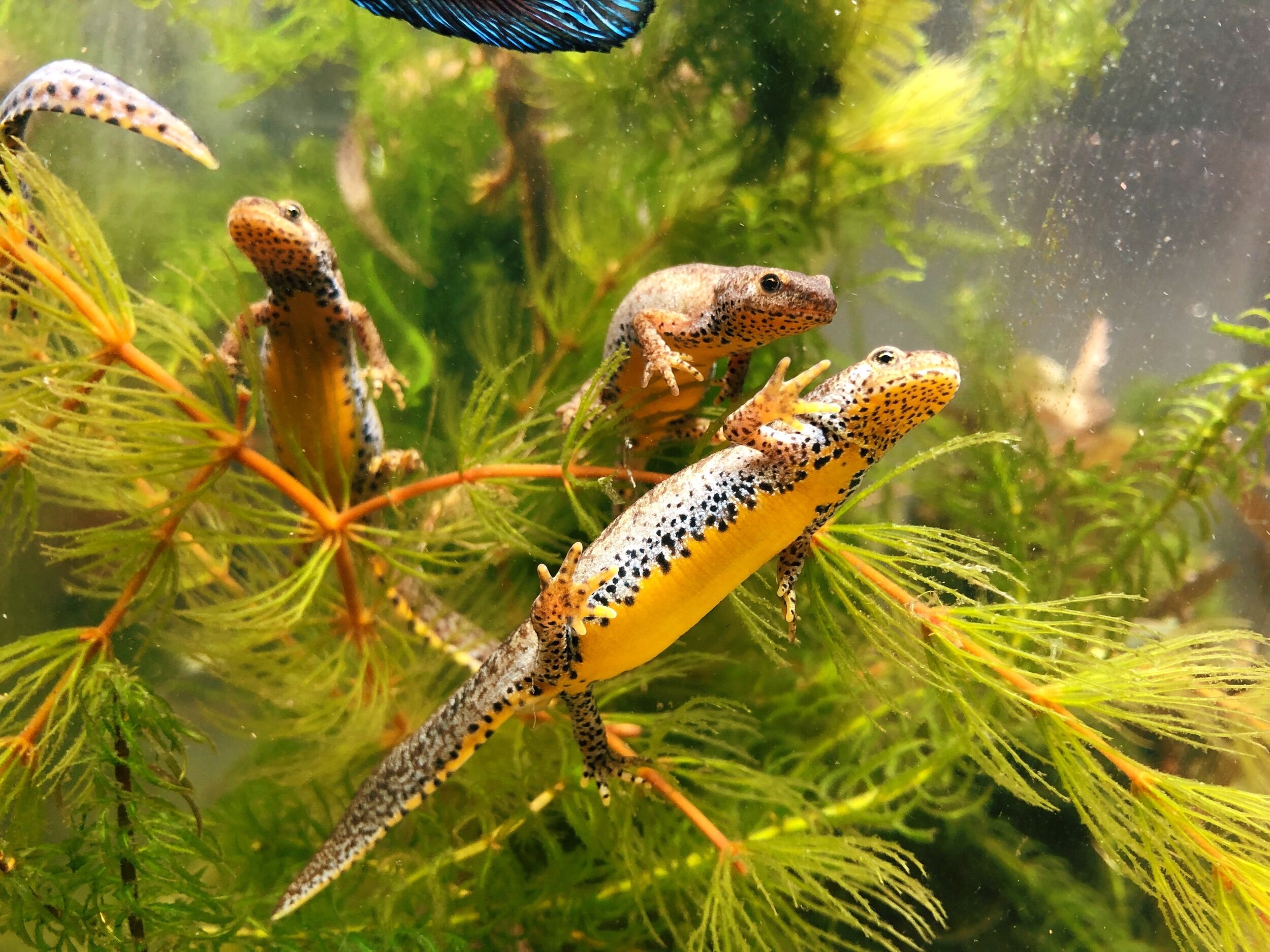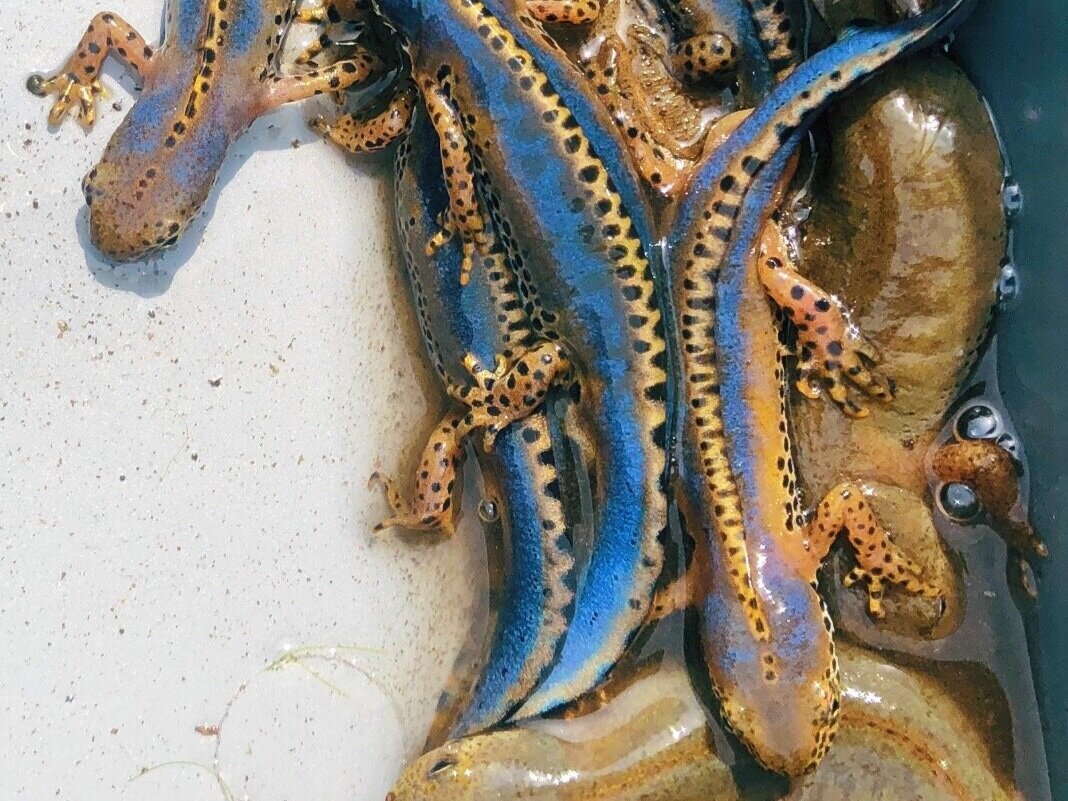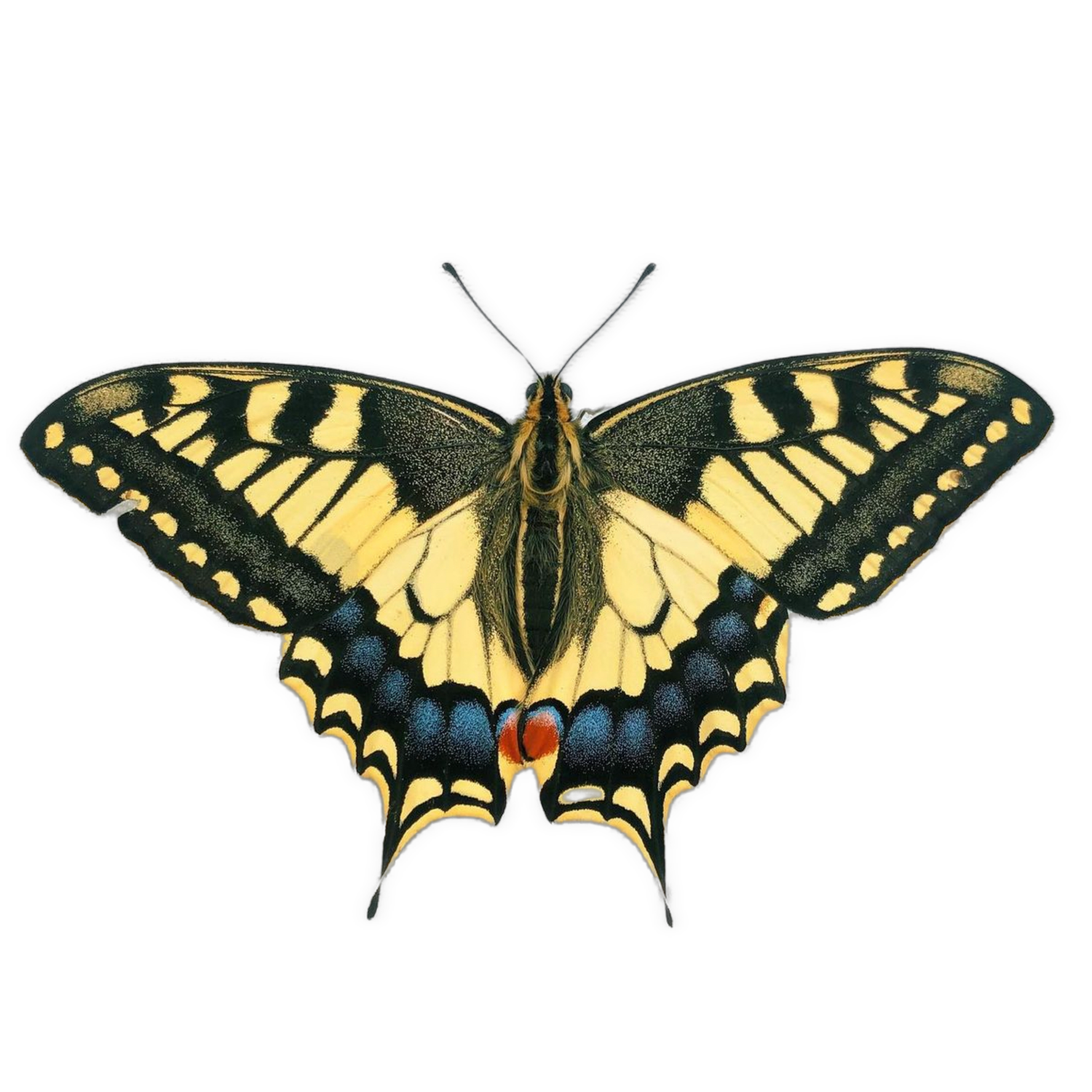This guide is written mainly in reference to the subspecies apuanus and inexpectatus – the two Italian subspecies, found in the North and South respectively. These are the two subspecies I am currently breeding, and the ones available to order on this site.
Alpine Newt Care Guide
Alpine Newts are small, brightly-coloured, lizard-like creatures, native to most of Europe – as far West as Spain, East into Russia, North into Scandinavia and South into regions of Italy and the Balkans. It is a species (Ichthyosaura alpestris) with multiple subspecies, although the exact number of these is debated by taxonomists. In the past, as many as a dozen subspecies have been considered. Additionally, there is growing consensus that the Greek subspecies (ssp. veluchiensis) may be valid as a full species in its own right, due to the presence of an additional vertebra, and some other phenotypic and genetic differences.
Based on the subspecies (six) I have experience with, there are some differences in behaviour that should be reflected in husbandry. Therefore, this guide is written mainly in reference to the subspecies apuanus (image above) and inexpectatus (image below) – the two Italian subspecies, found in the North and South respectively. These are the two subspecies I am currently breeding, and the ones available to order on this site. Other subspecies, like alpestris, and perhaps reiseri, tend towards a more terrestrial life between breeding seasons and as juveniles after metamorphosis, whilst the two in focus are significantly more aquatic.
These newts are only around 7-12cm in length (occasionally mature females will reach 14cm if their tails are especially long), with females being noticeably larger than males. Males of the species are typically blue in colour, often with some mottling, with a yellow or orange belly. Females, however, can occur in various shades of brown, grey, and green, also with some mottling and bright bellies.

Housing & Maintenance
The two aquatic subspecies make for excellent pet newts, doing very well year-round in a fully aquatic setup. I’d recommend starting with an aquarium of at least 45 litres (about 10 gallons) in volume and a length of at least 40cm for a group of 4-6 newts – a larger water volume ensures greater stability of conditions (temperature, ammonia, nitrite levels), whilst the length allows sufficient room for the newts to move and behave naturally. I have seen shallow puddles, ditches and springs teeming with these newts in the wild, so they clearly do not need huge amounts of space.
They are not social animals, perfectly content living solitarily, however seeing the newts interacting naturally is part of the joy for me, so I always keep at least a few together. Watching the entire life cycle take place is also fascinating, from eggs through the larval stages and finally metamorphosis.
If keeping a larger group, I would recommend applying 10 litres per newt when searching for an appropriate tank, e.g. 60 litres for 6 newts. They will prefer more floor space than height, so choose a long tank rather than a particularly tall one. Also note that a larger water volume is much more able to support the biological/microbial load of the inhabitants, so you could probably keep slightly more than one newt per ten litres. For example, I have a 120 litre tank of 80cm in length (more than 90% full, so about 110 litres of water) that is home to 15 adult newts with several of their larvae.




Water quality must always be high, otherwise the newts will become stressed or diseased and try to escape. The water temperature is also important – being a temperate species, Alpine Newts prefer cooler water, and can suffer during warm periods. Roughly 15-22 degrees is ideal for them, however they are absolutely fine at any temperature above zero (and can even survive freezing) and can tolerate short periods above 25 degrees. During hot weather, keep an eye on the water temperature. You can cool the setup by adding frozen bottles of water to the tank in rotation.
These (like most) newts do not enjoy strong water currents, however they don’t mind a small amount of water movement – confirmed in both captive and wild animals – so I would always recommend some kind of filtration. Some people prefer sponge filters or simply air stones, however I use submersible filters from All Pond Solutions’ IF
(internal filter) Range. These come with spray bars which attach to the outflow of the filter and can be used to disperse the flow, softening it to a small amount of water disturbance whilst still keeping it pristine. Select appropriate sized filters for your tank size. If the flow is too strong you can adjust the spray bar in different directions or positions to disperse it, however if the problem persists you may wish to select a filter for smaller tanks with lower litre per hour turnover.
It is also essential to have somewhere for the newts to leave the water should they desire, as they breathe air (not water) and can drown. I simply use pieces of cork bark in all my tanks, which naturally float. You will probably find the newts rarely use this, but it is good to have. Occasionally I find them sleeping/resting on it, but most of the time the newts are in the water. If your newts are gathering on this it may be an indication that something is wrong with the water – use an aquarium testing kit to assess this, you essentially want the same conditions as recommended for freshwater fish.
Plants are an essential part of an Alpine Newt tank. Heavily planted tanks are always best, as the plants help to maintain water quality in addition to the filter, as well as creating a naturalistic environment, providing enrichment. There are several different plants you could chose, but my favourites are various Elodea, Ludwigia, Vallisneria, and Guppy Grass. Pond weeds can also be used.
Newts broadly inhabit fishless waters – many fish species will predate upon the newts and/or their eggs and larvae – and will often leave water bodies if they are inhabited by fish. Interestingly, when I have observed these newts in the wild, they quite often inhabit water bodies that are semi-permanent, i.e. they dry out for a portion of the year (usually late summer), meaning that fish are unable to survive, leaving the habitat open for colonisation by the newts – Common Frogs tend to breed in the same kind of water bodies for similar reasons. I do, however, keep some small, peaceful fish with my alpine newts – Guppies, Platies, Bristlenose Plecos and Peaceful Betta. These are all content at room temperature, do not bother the newts, and create quite an attractive display. They also keep the tank interesting when the newts are hibernating elsewhere. The newts also seem to enjoy chasing the fish occasionally, though I have never seen them catch any. Bristlenose Plecos are particularly helpful as they eat leftover food, in turn preserving water quality. In addition to these fish, Ramshorn Snails, Greater Pond Snails, and Cherry Shrimp (Neocaridinia) are excellent at cleaning up after the newts.


Diet
Dendrobaena earthworms are a perfect, nutritionally complete staple diet, and should be offered 2 or 3 times per week (this is only a guide and is modifiable). It may take a little while to figure out portion size and feeding schedule depending on the number of newts you have, try to feed roughly what they can eat in about 30 mins. Food left over after this tends to pollute the water, which can cause a variety of other problems. Large earthworms may need to be cut into pieces for your newts, and you can offer various other livefoods supplementally to enrich their diet, e.g. whiteworms, blackworms, bloodworms, and Daphnia.


Breeding & Rearing
If you have taken the time to set your tank up correctly, Alpine Newts will breed very easily, often without any encouragement. Many keepers report breeding occurring regardless of whether the newts are ‘conditioned’ to breed, likely as they respond to changes in photoperiod (daylight) over the course of the year.
In my experience, the most reliable way to ensure breeding is by keeping the newts terrestrial under cool conditions over the winter – I keep mine from November to early February in a suitably sized plastic container (with air holes) lined with a bed of moss, in a temperature-controlled refrigerator at 4 degrees centigrade, however any cool location is fine as long as they do not freeze. You can also move their tank somewhere cooler, however I find the terrestrial period seems to produce a greater number of eggs, and higher fertility rates. Eight to twelve weeks at </= 8 degrees is sufficient to induce breeding. Stop feeding a week before moving the newts to a hibernation setup so that their digestive system is free of undigested food which can kill them.
After their period of cold dormancy, reintroduce the newts bank into the tank by placing them on the floating cork bark (or island of your choice). They may re-enter the water straight away, or stay in place for a few hours, up to a day or so, as they acclimatise to the warmer temperatures.
As they have spent a few months living terrestrially, the newts’ skin will have become dryer and rougher, so you may notice that they shed their skins after entering the water as they readjust to aquatic life. Their skin becomes smoother, and males quickly begin to adopt their breeding colours – bright blue flanked with some yellow/gold (the photos below illustrate males in full breeding condition). Their black-and-white striped crests also heighten slightly to a few millimetres, and the tail becomes taller. Within a couple of weeks, the males will be in full breeding condition and spend most of their time chasing females attempting to court them. The courtship displays involves the male fanning his tail in the direction of the female, dispersing pheromones, which the female then responds to by following the male. Each newt may mate several times over a single breeding season, with males constantly searching for mates throughout this period of around 3-5 months.


Reports tend to suggest that female newts can produce 200-300 eggs in a breeding season, but my experience is that they can lay twice as many as this if conditions are favourable. Feeding a rich diet helps, particularly using livefoods, though they happily feed on frozen and pelleted foods if small enough. Eggs are laid among the leaves of aquatic plants. The female newt clasps a leaf with her hind feet, laying a single egg at a time, then folds the leaf over to hide the egg (in nature this disguises them from other newts or predators). These are quite easily spotted in the tank once egg-laying begins, you can wait for a plant/stem to become covered in eggs then remove it to a rearing tank (storage bins are ideal for this purpose) for eggs to hatch into. Eggs take about 3 weeks to develop into larvae, though this can be shorter or faster depending on the temperature. The embryo is covered by a few millimetres of clear jelly (like frogspawn, but individually), so you can actually watch the embryo develop into a larva. When fully formed, the egg bursts and the larva is released into the water. It is essential that eggs are kept in clean water, as foul water can cause the eggs to mould over and die. Rainwater is pristine, easily collected by placing a container of some sort outside during rainy weather or, alternatively, fill a container with tap water and allow 48 hours for chemicals to evaporate before you use it. Tank water from the parents’ enclosure is also fine as long as it is clean too.
Hatchling larvae are tiny, usually a few millimetres in length, and feed only in response to moving live food – feeding behaviour is triggered by movement at this point in their development, as they do not yet have a sense of smell. Therefore, the larvae require tiny live food items. Some people like to use baby Brine Shrimp, however these are saltwater invertebrates and will die within a day or so if not eaten, fouling the water. My personal preference is to add Daphnia to the rearing tank in advance, allowing them to establish and breed, so that there are tiny newborn daphnia for the hatchling newt larvae to feed on. Daphnia are very nutritious, but also rich in carotenes, which create the vivid orange belly colours in the adult newts. As the larvae become larger, they will consume the bigger daphnia, growing quickly at room temperature. Once they reach 1.5cm or so, you can supplement their diet with slightly larger foods, such as grindal worms (like whiteworms but smaller), relative to their size. Once the larvae have developed front legs and their back legs are budding, they begin to develop a sense of smell. At this point, you can start to offer them dead/processed foods, like frozen bloodworms and cichlid pellets.
By the time the larvae are approaching metamorphosis, they will typically be around 3-5cm in length. You may notice that their colouring from the brown-grey larva to blue mottling of the juvenile newt. Typically, they start to lose their gills at this point, but Alpine Newts are very capable of neoteny – retaining juvenile features, in this case gills, into adulthood – so it is possible that not all of them will complete metamorphosis. The bright bellies also become apparent at this stage. To avoid morphs drowning, I bring the water level down to around 10cm when the larvae begin to metamorphose, keeping it full of dense aquatic vegetation. It is easier to feed aquatic juveniles, so I prefer to keep my morphs in an aquatic setup, therefore I do not offer an island for them. This means they cannot fully leave the water and dry out, but they can sit on top of the vegetation to rest and breathe air. Keep the water full of live foods to encourage the newts to stay aquatic. Once they begin feeding again (which could take a week or two after morphing) you can gradually increase the water level. Kept in this way with plentiful food, they will reach adulthood by around 9-12 months old (terrestrially 2-3 years would be more typical) and are often capable of breeding by the following spring. Certainly, you should be able to distinguish their sexes at this size. By this size, they are ready to cohabit with their parents and can be added to the main tank.
A less laborious method for rearing larvae involves leaving the eggs in situ, in the adult tank. You will lose some to adult predation, which naturally occurs in the wild, but several are likely to survive and will feed off the rich invertebrate life already established in the tank. Among the aquatic vegetation are a lot of tiny organisms which we don’t generally notice, but which provide an excellent food source for young larvae. Lots of aquatic plants will ensure plenty hiding spaces for hatchlings. Despite their voracious (yet clumsy!) feeding behaviour, adult newts show little interest in larvae, though they will eat one if the opportunity is in front of them. Generally, well-fed newts do not predate upon their own offspring in captivity.

